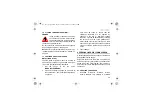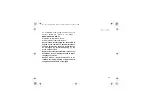
R
22
5 CALIBRATION ADJUSTMENT
Calibration adjustment is the process of setting the
gauge to known values of thickness to ensure
accuracy on different substrate types, shapes and
surface finishes.
Note
: When using an FNF probe it must be
calibrated in both the ferrous mode and in the non-
ferrous mode to ensure accuracy of reading.
5.1 CALIBRATION METHOD
The calibration of the gauge can be adjusted
(
MENU/CAL METHOD
) using several different
methods described in National and International
Standards.
The calibration adjustment method chosen is
dependant on the condition of the substrate to be
measured and is indicated on the screen by a
symbol (Figure 21):
Figure 21. CAL METHOD screen
SMOOTH:
Smooth surface calibration where the
gauge is set to zero on the uncoated surface and a
known thickness above the expected thickness of
the coating.
2POINT:
Calibration on a thin value and a thick
value either side of the expected thickness. This
enhances the accuracy of the gauge over the
thickness range defined by the two values.
ROUGH:
A calibration method similar to 2-Point.
This enhances the accuracy of the gauge over the
thickness range defined by the two values.
SPECIAL SUB:
This method uses the 2-Point
calibration for unusual substrate materials such as
cast iron, certain types of stainless steel, high
carbon steel, special aluminium alloys, etc.
Op_456_3_English.book Page 22 Thursday, January 22, 2009 7:58 PM
















































